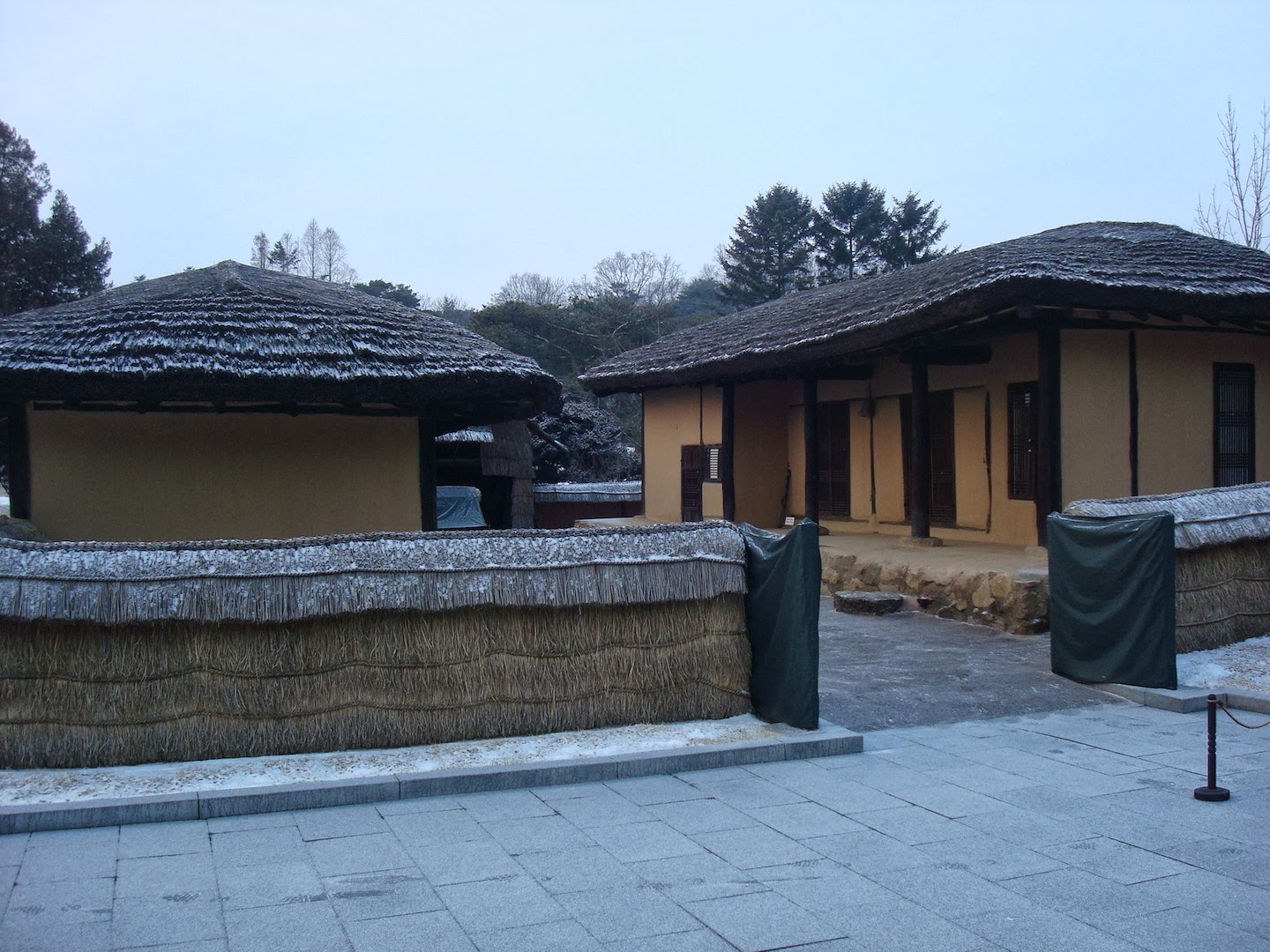 |
| Poyhon Buddhist Temple |
The hotel was freezing yet again, but only in the public areas. The rooms were toasty warm and the hot water was turned on in anticipation of our arrival (though only for one hour that night and one hour in the morning). The shower was in a raised bathtub that one must be pretty limber to get up into and was quite impossible to stand up straight in. There was a handheld shower nozzle because one must sit down in the bath, being careful to prevent water from soaking the tile floor below since there was no shower curtain. Dinner was satisfying as we sat close to the heaters, drinking our way into the evening and chatting about what had been seen so far and what was to come. It was a most delightful evening since there was nothing else to do and no other guests in the hotel.
 |
| Common man must suffer |
As we entered each room (we only went to a handful apparently) the power would come on; after 3-5 minutes in the room, the power went right back off as we exited; this applied to corridors as well. The gifts were from everywhere, but the kicker is that there was nothing special about any of them - they're basically gifts similar to Obama's iPod Mini he gave the Queen of England, or the Bowl of Hops given to the U.S. by the Irish Prime Minister. It's just crap that is formal in nature, but in reality, no thought goes into it. In the west, this stuff just gets stored in archives and is almost never displayed. Yet here, they flaunt it as to say, "Look at how much the world loves Dear Leaders!" I understand being naive or ignorant, but this takes it to a whole new level.
 |
| "Our technology is the Mightiest in…the…UNIVERSE!!" |
 |
| "Blah Blah NUCLEAR ANNIHILATION! blah blah blah AMERICAN IMPERIALIST, BOOM!!!" |
Back at our hotel in Pyongyang, the biggest news on the BBC was of course - Pope Benedict XVI was resigning. I was elated.
Our final day rounded out the city with a few last ditch efforts to show us outsiders how great North Korea really is. We first went to the Railway Museum, which is not what is sounds like. Walking inside and the first thing you see is a huge floor to ceiling marble hall (coincidence?) with a 70 ft, wide by 20 ft. tall mural of Kim Il Sung and Kim Jong Il at the opening of a Railway station. HOLY COW, BATMAN!!! The museum is not about railways, but about Kim Il Sung's involvement with them, from his many railway trips to the importance of how he used them to [single handedly] defeat the Japanese occupiers. The train cars displayed included the one Kim Il Sung rode to China in and the one that his mother died in. It is truly a MUST see.
Following that, we went to what can best be described as the Industrial Museum, which was a warehouse with a few models displaying different (obsolete) technologies, mineral mines, etc. There were of course no pictures or videos of how these worked or contributed to North Korea, rather, there were pictures of …guess who…. looking at these machines admiring their [efficiency].
 |
| Outside the People's Study House |
We visited a classroom during an English lesson - it was alright, and amusing when the drunk Irish guy from our group got up on the podium and started talking to the students. Following that we were shown the computer lab where people can actually access the internet - the internet here is only one page: that of the library. But it's THE internet, and the people think this is what all they hype around the world is about.
 |
| The Magnificent Kim Jong Il |
 |
| Kim Il Sung Square |
Afterwards we headed to the Revolutionary Martyrs' Cemetery on a high hill overlooking the city. It contains hundreds of bronze busts of the many heroes who died fighting the Japanese occupiers, including (at the center, top) Kim Il Sung's wife, and a bunch of other very important people. This was probably the only thing in North Korea that westerners could agree on - resisting the ruthlessness of the Japanese in the early 20th century.
 |
| Kim Il Sung birth house |
Our last stop was the Golden Lane Bowling Center, one of the only places where "fun" is allowed. People come here on dates and bowl. There were some pretty obsolete arcade games on the second floor, and the place was ever freezing still. To the right of the entrance was a memorial to Kim Il Sung adorned with flowers and all the bells and whistles. In the center was a blown up picture of … you guessed it….. Kim Il Sung visiting the bowling alley (a few weeks/months before he died).
When we returned to the hotel, all I could manage to do was take a warm shower and go to sleep. Sadly the other American and I would be flying back to Beijing the next morning while the non-Americans would board an overnight train to China; Americans are only allowed to enter and exit North Korea by air.
 |
| Kim Il Sung visit the bowling alley |



No comments:
Post a Comment